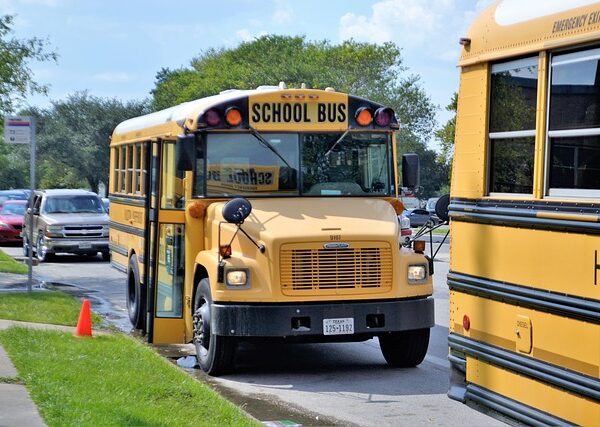Select Road Safety Tips: Navigating Towards Safer Global Mobility
Introduction
In today’s fast-paced world, road safety has emerged as a critical global concern, with governments, organizations, and individuals alike recognizing its paramount importance. “Select Road Safety Tips” represent a comprehensive approach to mitigating risks and enhancing the security of those on our roads. This article delves into the multifaceted aspects of this topic, exploring its historical foundations, international impact, economic implications, technological innovations, policy frameworks, and the challenges that lie ahead. By examining these elements in detail, we aim to equip readers with a thorough understanding of road safety practices and their transformative potential.
Understanding Select Road Safety Tips: A Holistic Approach
“Select Road Safety Tips” is not merely a set of guidelines but a strategic framework designed to tackle various aspects of road safety. It encompasses a range of targeted interventions aimed at reducing traffic fatalities, injuries, and accidents. The core components include:
- Infrastructure Improvements: Upgrading road designs, adding pedestrian crossings, better lighting, and implementing traffic calming measures.
- Vehicle Safety Standards: Enhancing vehicle regulations to ensure stricter safety protocols for both drivers and passengers.
- Traffic Law Enforcement: Stricter enforcement of speed limits, seatbelt laws, and drunk driving regulations.
- Public Awareness Campaigns: Educating the public about safe driving practices, road rules, and the consequences of risky behavior.
- Emergency Response Systems: Developing efficient emergency medical services (EMS) and improving response times.
- Data-Driven Analysis: Utilizing data analytics to identify accident hotspots and implement targeted safety measures.
The concept has evolved over time, influenced by growing awareness of road accidents’ devastating impact on public health and economies worldwide. Its historical roots can be traced back to the early 20th century when initial efforts focused on simple traffic rules and law enforcement. However, as the number of vehicles on the road increased exponentially, so did the need for more sophisticated strategies. The modern interpretation of “Select Road Safety Tips” emerged in response to this evolving challenge, emphasizing a tailored, evidence-based approach to safety enhancements.
Global Impact and Trends: A Diverse Landscape
The influence of “Select Road Safety Tips” extends across borders, shaping transportation safety globally. Key trends reveal interesting disparities among regions:
- North America and Europe: These regions have generally adopted more stringent safety standards, with extensive infrastructure upgrades and robust law enforcement. For instance, Sweden’s vision zero approach has led to significant reductions in traffic fatalities.
- Asia Pacific: Rapid urbanization and increasing vehicle ownership present unique challenges. Countries like Japan and Singapore have implemented successful strategies, focusing on advanced technology for traffic management and vehicle safety systems.
- Africa and the Middle East: These regions often face limited resources for road infrastructure but have shown progress through community involvement and targeted initiatives.
- Emerging Trends: Globally, there’s a growing emphasis on smart city technologies, autonomous vehicles, and data analytics for predictive safety planning.
Economic Considerations: A Multi-Billion Dollar Industry
The economic implications of “Select Road Safety Tips” are substantial, impacting various sectors:
| Sector |
Impact |
| Infrastructure Development |
Governments invest heavily in road construction and maintenance, with safe infrastructure reducing future costs associated with accidents. |
| Automotive Industry |
Strict safety standards drive innovation, leading to advanced vehicle technologies that enhance safety and potentially increase sales. |
| Healthcare |
Road accidents impose a significant burden on healthcare systems, and improved safety can lead to lower treatment costs. |
| Insurance |
Insurance premiums are influenced by regional safety records, with safer areas potentially benefiting from lower rates. |
| Tourism |
Safe road conditions contribute to positive travel experiences, boosting tourism revenue in many countries. |
Technological Advancements: Revolutionizing Road Safety
Technology plays a pivotal role in modern road safety initiatives, and several advancements have made significant impacts:
- Advanced Driver Assistance Systems (ADAS): Features like automatic emergency braking, lane departure warning, and adaptive cruise control significantly reduce accidents caused by human error.
- Connected Vehicles: Communication between vehicles and infrastructure enables real-time safety alerts and collision avoidance systems.
- Autonomous Vehicles: Self-driving cars promise to revolutionize transportation, with potential for zero-fatality accidents if implemented safely.
- Data Analytics Platforms: Advanced analytics processes vast amounts of traffic data, identifying patterns and trends to inform policy decisions.
- Mobile Applications: Apps provide real-time traffic updates, navigation assistance, and safety tips, empowering drivers with knowledge.
Policy and Regulation: Shaping the Safety Landscape
Effective road safety policies and regulations are essential for driving (pun intended) change. Many countries have implemented successful frameworks:
- The United Nations (UN) and its Role: The UN’s Global Road Safety Partnership provides a platform for international cooperation, sharing best practices, and setting global targets.
- Regional Agreements: Organizations like the European Union (EU) and Association of Southeast Asian Nations (ASEAN) have developed regional road safety strategies, ensuring consistency across borders.
- National Initiatives: Countries like Sweden, Australia, and Canada have established comprehensive policies with specific goals, such as halving traffic deaths by 2030.
- Legal Frameworks: Strict laws against drunk driving, seatbelt use, and mobile phone usage are common, with penalties varying across jurisdictions.
Challenges and Criticisms: Overcoming Barriers
Despite its benefits, “Select Road Safety Tips” faces several challenges:
- Funding Constraints: Implementing safety measures often requires substantial financial resources, which may be limited in developing regions.
- Community Buy-in: Gaining public support for certain policies, like speed limits or vehicle inspections, can be challenging.
- Technological Barriers: Adopting new technologies, such as autonomous vehicles, raises concerns about cybersecurity and liability.
- Data Privacy: As data analytics become more crucial, ensuring the privacy of personal information collected for safety purposes is essential.
Strategies to Overcome Challenges:
- Public-Private Partnerships: Collaborating with private sector entities can bring additional resources and expertise.
- Community Engagement: Involving local communities in decision-making fosters a sense of ownership and increases support for safety initiatives.
- Gradual Implementation: Phased rollout of new technologies allows for learning, adaptation, and addressing challenges along the way.
- Strict Data Governance: Implementing robust data protection laws ensures public trust in safety-related data collection.
Case Studies: Successful Implementations
Sweden’s Vision Zero Approach
Sweden’s road safety strategy is a renowned success story. The “Vision Zero” concept aims to eliminate all traffic deaths and serious injuries. This multifaceted approach includes:
- Comprehensive Infrastructure Design: Swedish roads are known for their excellent design, featuring wide shoulders, good lighting, and clear signage.
- Strict Traffic Laws: The country has some of the toughest driving laws globally, with severe penalties for violations.
- Public Awareness Campaigns: Regular campaigns educate drivers and pedestrians about safety, emphasizing shared responsibility.
- Advanced Emergency Services: Sweden’s EMS is highly efficient, with quick response times and specialized teams.
Singapore’s Smart Nation Initiative
Singapore has embraced technology to enhance road safety as part of its Smart Nation vision. Key initiatives include:
- Connected Vehicles and Infrastructure: The city-state utilizes a network of connected cars and smart traffic lights for real-time data sharing.
- Autonomous Shuttles: Singapore tests autonomous shuttles in pedestrian areas, offering a glimpse into the future of urban mobility.
- Data Analytics for Safety: Advanced analytics identifies high-risk zones, enabling targeted interventions.
- Community Engagement Apps: A mobile app allows residents to report road hazards and safety concerns, fostering a proactive approach.
India’s Safe City Initiatives
India has launched several city-level initiatives to improve road safety, especially in urban areas:
- Traffic Calming Measures: Cities like Delhi have implemented speed bumps, reduced lane width, and pedestrian-friendly crossings.
- Public Awareness Programs: “SaveLife Foundation” runs campaigns with celebrities to promote safe driving practices and helmet use.
- Data-Driven Safety: Mumbai uses data analytics to identify accident hotspots, leading to targeted infrastructure improvements.
- Community Policing: Local police departments collaborate with communities to organize safety events and enforce traffic rules.
Future Prospects: Emerging Trends and Opportunities
The future of “Select Road Safety Tips” is filled with both challenges and opportunities:
- Smart Cities and Data Integration: The integration of smart city technologies will enable real-time monitoring and data-driven decision-making, enhancing safety management.
- Autonomous Vehicles and Liability: As autonomous vehicles become more prevalent, legal frameworks must address issues of liability and insurance for self-driving cars.
- Cybersecurity in Transport: Protecting connected and autonomous vehicles from cyber threats will be critical to ensuring public trust.
- Sustainable Safety Measures: With a growing focus on sustainability, there’s an opportunity to integrate green infrastructure and eco-friendly safety solutions.
- Global Collaboration: Enhanced international cooperation can lead to the sharing of successful strategies and best practices.
Conclusion: Navigating Towards Safer Mobility
“Select Road Safety Tips” represent a comprehensive, evidence-based approach to tackling one of the most pressing global challenges—road safety. Through a combination of infrastructure improvements, technological advancements, policy interventions, and public education, significant progress can be achieved. The case studies presented highlight successful implementations across diverse regions, offering valuable insights for other nations.
As we look to the future, the world has an opportunity to collaborate, innovate, and adapt “Select Road Safety Tips” to create safer, more sustainable transportation systems. By addressing challenges head-on and leveraging emerging technologies, we can move towards a future where road accidents are significantly reduced, saving lives and enhancing mobility for all.
FAQ Section: Answering Common Queries
Q: How do I contribute to road safety as an individual?
A: Individuals can make a difference by practicing safe driving habits, such as wearing seatbelts, adhering to speed limits, and avoiding distractions. Supporting public awareness campaigns and community initiatives also contributes to overall road safety.
Q: What role does weather play in road safety?
A: Adverse weather conditions like rain, snow, or fog can significantly impact road safety. Drivers should adapt their behavior accordingly, reducing speed and increasing following distances. Governments also implement winter maintenance plans for roads to ensure safer travel during harsh weather.
Q: Are there any global targets for road safety?
A: Yes, the United Nations has set a goal to halve the number of deaths and injuries from road traffic accidents worldwide by 2030. This target serves as a roadmap for countries to develop their own safety strategies.
Q: How can technology help prevent drunk driving?
A: Technology plays a crucial role through devices that detect blood alcohol levels, such as smartphone apps and in-vehicle sensors. These tools can alert drivers and passengers when a person is unfit to drive, promoting safer choices.
Q: What are some common causes of accidents on rural roads?
A: Rural road safety challenges include higher speeds, limited infrastructure, and poor visibility. Animal crossings, loose gravel, and unpaved roads contribute to accident risks. Tailoring safety measures to these unique rural settings is essential for effective mitigation.
Adhering to traffic rules, understanding rights/responsibilities, learning local laws, and prioritizing safe practices like signaling, maintaining distance, and avoiding distractions are essential Sel…….
Understanding common road risks is crucial for defensive driving. Staying alert, maintaining safe distances, regular vehicle maintenance, and recognizing dangerous behaviors reduce accident risk. Sele…….
Communities play a vital role in road safety by providing insights for tailored solutions like optimized lighting and emergency education. Their involvement fosters shared responsibility through aware…….
Before traveling, conduct thorough research on local laws, customs, and safety challenges, especially in diverse landscapes. Prepare essential documents, pack a travel kit, and incorporate road safety…….
Head injuries among cyclists are a significant concern. While helmets aren't mandatory everywhere, their use, along with understanding vehicle dynamics and blind spots, is crucial for safety. Sel…….
Before driving, follow Select Road Safety Tips: check tires, brakes, lights, and fluids; stay alert with defensive driving techniques; inspect airbags and braking power; enhance low-light visibility;…….
Common hazards on roads include icy conditions and distracted driving. Adopting safe practices like winter techniques and avoiding distractions reduces risks. Emergency procedures from rolled-over veh…….
In today's fast-paced world, visibility is key for safe winter driving. Reflecting gear enhances presence on the road, preventing accidents and enabling quick evasive maneuvers during low-light c…….
Rainy weather necessitates Select Road Safety Tips. Reduce speed, maintain distance, use headlights, deploy wiper blades at max speed, avoid blinding others with low beams, exercise caution in flooded…….
Speed limits protect all road users by reducing crash risk, minimizing congestion, and promoting awareness. They are based on road conditions, weather, and traffic density, with penalties deterring ex…….









